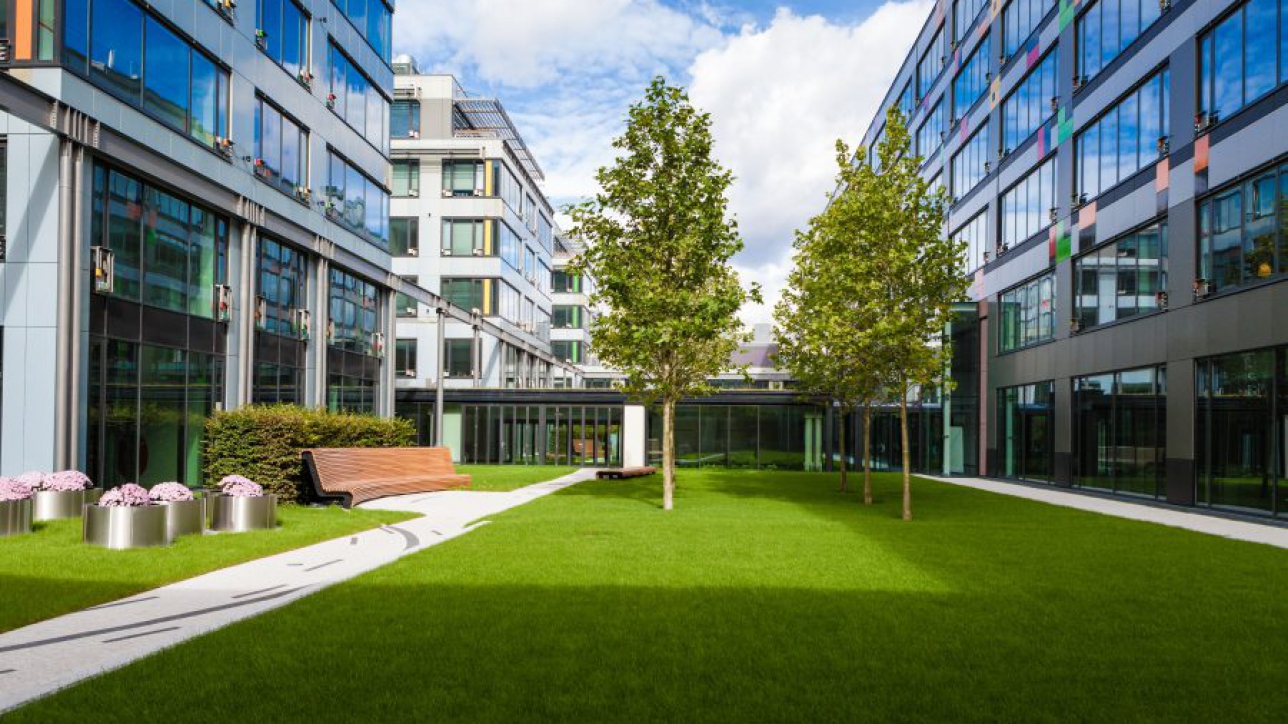Introduction
In the mid-1990s, the non-profit U.S. Green Building Council (USGBC) introduced its Leadership in Energy and Environmental Design (LEED) program, a green-building certification process. LEED certification process has helped building owners and operators use resources more efficiently in the construction, operation and maintenance of buildings, homes and even neighborhoods.
The next step seems to be interior building spaces, and their impact on occupants. One tool developed to measure “interior quality” is WELL Building Standard certification, which was officially launched in 2014 by interior space consultant Delios.
WELL Building certification is used in tandem with LEED. While LEED focuses on the structure itself, WELL Building targets the occupants, such as employees. The idea behind the concept is that improving interior environments can help boost worker productivity.
What is WELL?
WELL Building certification, managed by the International WELL Building Institute, resulted from years of research, development and input from the Cleveland Clinic and University of Columbia Medical School, as well as Harvard University, Cornell University, University of California, Berkley, the National Institutes for Health, and others.
The building standard certification is based on the premise that people spend a great deal of time indoors, especially at the office. As such, the certification process focuses on improving individual productivity and experience by targeting seven concepts within building interiors.
The concepts consist of:
CONCEPT: Air
ISSUE: Polluted air is the No. 1 environmental cause of premature death, contributing to 200,000 such deaths annually in the United States.
WELL BUILDING STANDARD: Focuses on proper air filtration, geared toward reducing/minimizing sources of indoor air pollution
CONCEPT: Water
ISSUE: Dehydration, even by small amounts, has been shown to impair cognitive performance; the Institute of Medicine suggests women consume at least 2.7 liters of water per day from food and beverages, while men should consume at least 3.7 liters.
WELL BUILDING STANDARD: Promotes availability of clean, filtered water. Water is regularly tested for purity.
CONCEPT: Nourishment
ISSUE: More than half of the world’s adult population is overweight, which leads to increased medical costs, as well as higher absenteeism due to obesity-related illnesses.
WELL BUILDING STANDARD: Requires availability of fresh and wholesome foods, as well as programs that support and encourage mindful eating.
CONCEPT: Light
ISSUE: Disruption of the body’s 24-hour circadian rhythm can lead to chronic diseases including obesity, diabetes and depression.
WELL BUILDING STANDARD: Provides illumination guidelines that include plenty of natural light.
CONCEPT: Fitness
ISSUE: Sedentary behaviors can also lead to obesity and diabetes; 23% of adults fail to meet exercise and physical activity guidelines established by the World Health Organization.
WELL BUILDING STANDARD: Integrates physical activity into everyday life in the workplace; discourages sedentary behaviors with tools including “standing” desks and encouraging walking.
CONCEPT: Comfort
ISSUE: Work-related musculoskeletal disorders result in more than $2.5 billion in medical and associated costs. Distracting noise (such as that found in an open work environment) can contribute up to a 66% decline in performance.
WELL BUILDING STANDARD: Considers and implements acoustic and ergonomic comfort, provides office furniture to minimize musculoskeletal issues and noise reduction.
CONCEPT: Mind
ISSUE: Environmental characteristics directly impact mental health; such characteristics include crowding, noise, indoor air quality and light.
WELL BUILDING STANDARD: Optimizes cognitive and emotional health through design, technology and treatment strategies.
Who Is Using It?
The WELL Building Standard is still a new concept, and in the pioneer stage. Still, there is a handful of companies and building owners that achieved certification.
CBRE Global Headquarters, Los Angeles
CBRE is the first commercial real estate office in the world to achieve WELL Building Standard certification. The process improved indoor air quality, offered circadian lighting and purified drinking water/healthy food access. Though research is still ongoing as to the impact, a recent employee survey showed that 92% felt the new space had a positive effect on health, while 94% acknowledged that it boosted business performance.
Andrew Ratner, CBRE’s Executive Vice President and Senior Managing Director, isn’t surprised at the results. “We have found that by incorporating wellness features into our workplace, it sends a very clear signal to our employees that we care about their health,” he said. “The result is that they feel energized and more productive when they are in the office.” Certification was obtained through the WELL Building Standard Pilot Program.
Shangri-La Construction Headquarters, Los Angeles
Glass office partitions encourage natural light throughout the office space, while an open plan is geared toward fostering teamwork and collaboration. Decorative metal ceiling elements and blue-painted walls are visual connectors between office areas, while boosting hallway movement. Certification was achieved through the WELL Building Standard Gold Pilot Program.
TD Bank Headquarters, Toronto
Optimizing the building’s 25,000-square-foot 23rd floor, included providing optimal lighting and enhanced water filtration of tap water, as well as a carbon filtration system on the base building mechanical system. Other features included specific nourishment requirements for food vendor providers, a tranquility lounge and ergonomic chairs, adjustable-height desks and touchdown stations. This office was the world’s first project certified under v1 of the WELL Building Standard.
Institute of Real Estate Management (IREM) Headquarters, Chicago
Includes LED ceiling ambient lighting, ergonomically crafted work areas, environmental cues that encourage employees to consume whole, natural foods and a demand-controlled air delivery system that optimizes fresh air. The IREM headquarters was the first professional association to achieve WELL Building Standard Certification.
Is Certification Effective?
The program is still new, meaning there aren’t specific statistics, as yet, to determine effectiveness. However, there is some anecdotal evidence that certification is working. As noted above, the CBRE employees seem to like their space. Furthermore, a recent article in IREM’s Journal of Property Management indicated that resource efficiency, associated with health, productivity and sustainability, can “motivate tenant companies around the world to green their office operations.”

